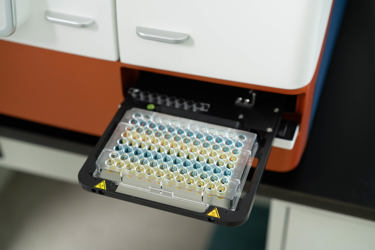Improved Cell Viability For Multi-Day Cell-Based Microplate Reader Assays
By Cathy Olsen, PhD, Mark McPate, PhD, Stanimira Valeva, PhD, Emanuele Giordano, MSc, Simon Lydford, PhD, Molecular Devices

This content is brought to you by Molecular Devices, a Danaher Operating Company.
Live cell-based assays are a cornerstone in pharmaceutical, environmental, and toxicology research, routinely used to evaluate cell growth, viability, cytotoxicity, and other critical parameters. These assays often require monitoring cellular responses to drug or compound treatments over several days to determine the most effective treatment windows for various cell types or 3D culture models. To ensure the sensitivity and reliability of the resulting data, maintaining consistent cell health is essential. Key environmental factors such as temperature and gas composition must be tightly controlled to replicate incubator-like conditions within the microplate reader.
Modern microplate readers typically include temperature control features to maintain a stable 37°C environment during extended experiments. However, integrating a gas mixer capable of delivering precise gas mixtures—including elevated CO₂ levels—can further enhance assay reproducibility by more closely mimicking incubator conditions. In this context, the SpectraMax® iD5e and iD3s Multi-Mode Microplate Readers, when paired with the SpectraMax® aer Gas Mixer, demonstrate a significant improvement in maintaining cell viability. In a study using U-2 OS cells cultured in 96-well plates over 72 hours, cell viability was assessed using both endpoint luminescent ATP assays and the RealTime-Glo™ MT Cell Viability Assay.
Learn how you can optimize your assay conditions and elevate your research outcomes.
Get unlimited access to:
Enter your credentials below to log in. Not yet a member of Bioprocess Online? Subscribe today.
